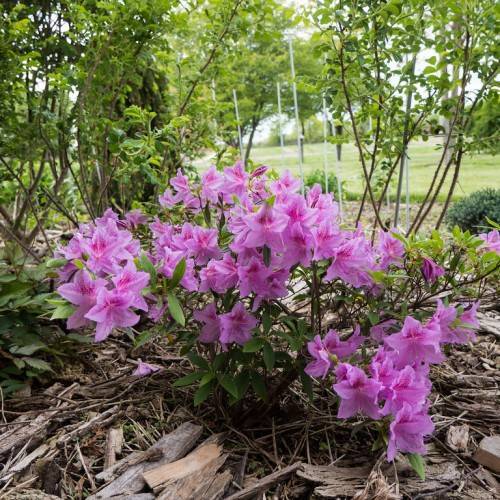
evergreen azalea
Rhododendron 'Fred D. Cochran'
Cycle:
Perennial
Watering:
Average
Hardiness Zone:
5 - 8
Flowers:
Flowers
Sun:
Part shade
Leaf:
Yes
Growth Rate:
High
Maintenance:
Moderate
Poisonous To Pets:
Yes
Care Level:
Medium
watering
The evergreen azalea (Rhododendron 'Fred D. Cochran' should be watered frequently and deeply in order to thrive. During its active growth period (typically in spring and early summer), water it about twice a week. Be sure to check that the soil is still moist 1-2 inches below the surface before adding more water. Pay attention to the specific needs of the plant, however, as it may need more or less water depending on factors like temperature, wind exposure, or potting soil type. During the plant’s slower growth period (late summer and winter) reduce the watering frequency to about once a month. Ensure that the soil completely dries out between waterings for best results. Lastly, it is recommended to give the azalea a boost of fertilizer after it blooms, so that it can be at its best for the next blooming season.
sunlight
Evergreen Azaleas (Rhododendron 'Fred D. Cochran') should be planted in a location that receives plenty of morning sunlight and partial afternoon shade, ideally with 4 to 5 hours of direct sun each day. Full sun is ideal in cooler climates, however, with too much direct sunlight in hotter climates the leaves of this plant may scorch or yellow and become unhealthy. Therefore, if temperatures can reach over 80 degrees Fahrenheit in the afternoon, partial shade in the afternoon will be beneficial.
pruning
Pruning of an Evergreen Azalea (Rhododendron 'Fred D. Cochran') should take place in early to late spring. This will help to keep its shape, encourage more blooming, and promote healthy growth. It is important to use sharp pruning sheers that are washed and sterilized. Prune lightly and selectively, removing only as much growth as is necessary. Remove spent flower clusters in late winter or early spring and thin out crowded branches. If the shrub has become overgrown, it may be necessary to selectively remove large branches or cut the plant back by 1/3. When cutting older branches, make sure to cut at a leaf node that is at least 2 years old and be sure to cut just above the node. Avoid cutting into old wood as this can cause injury to the plant.
